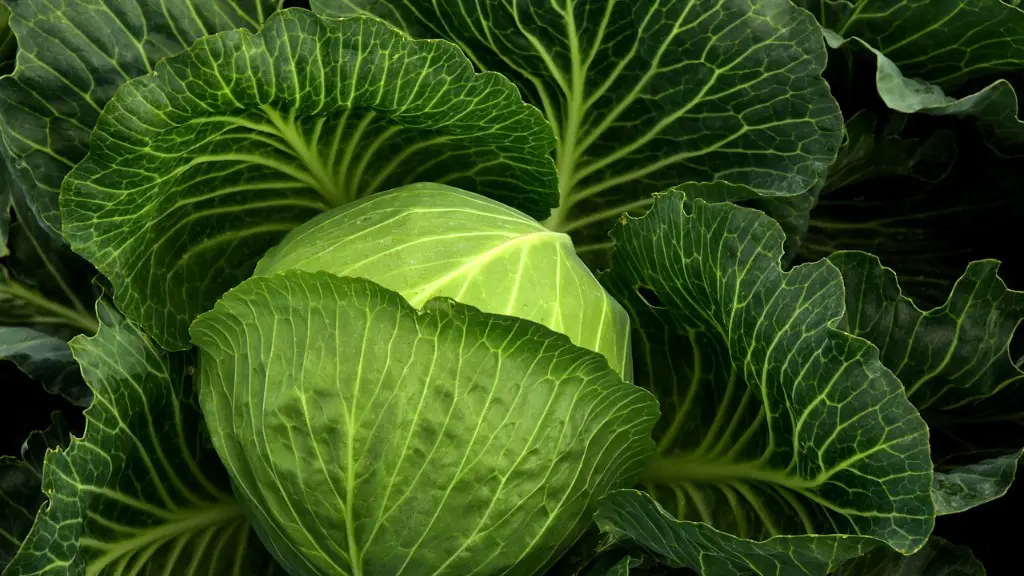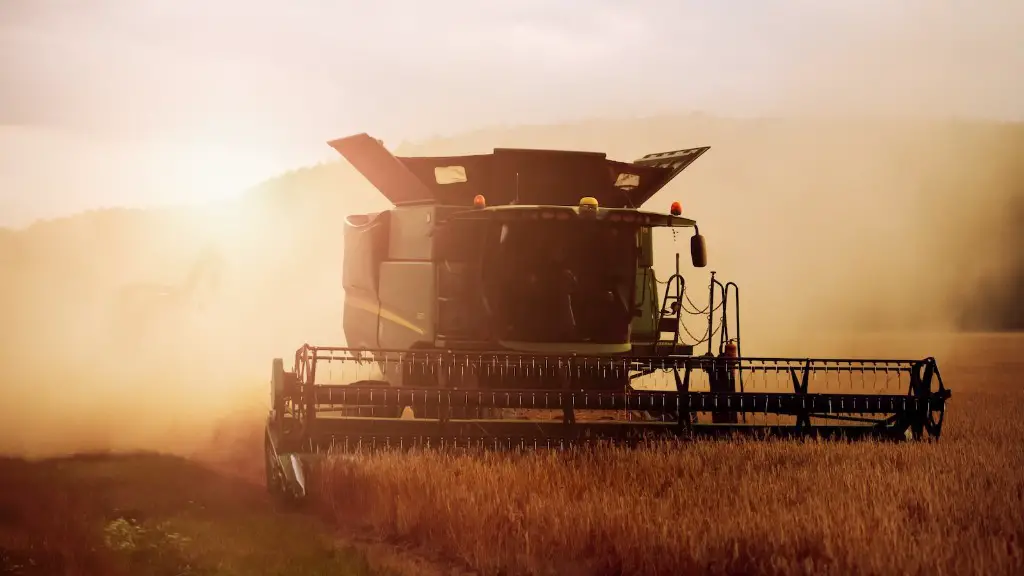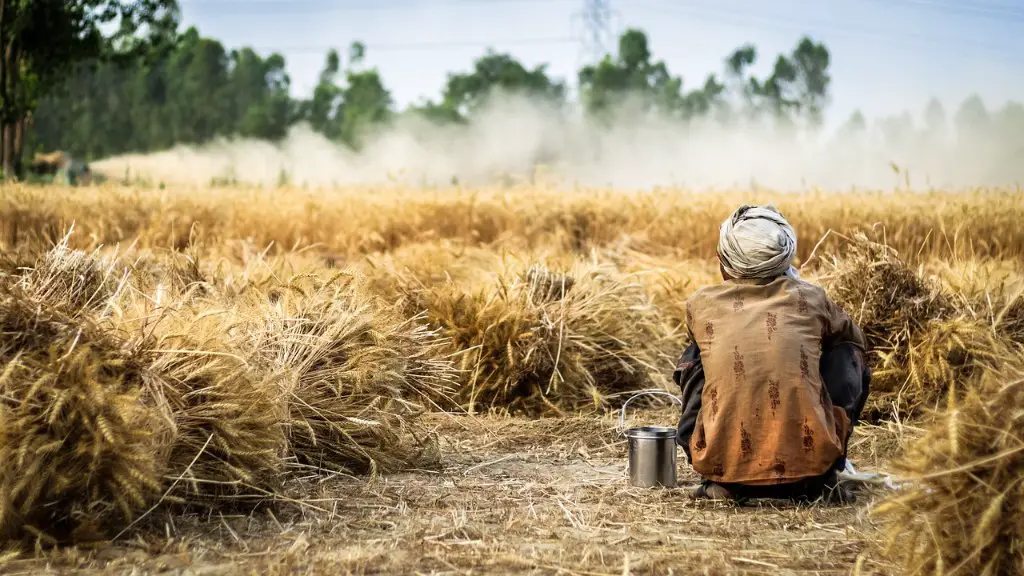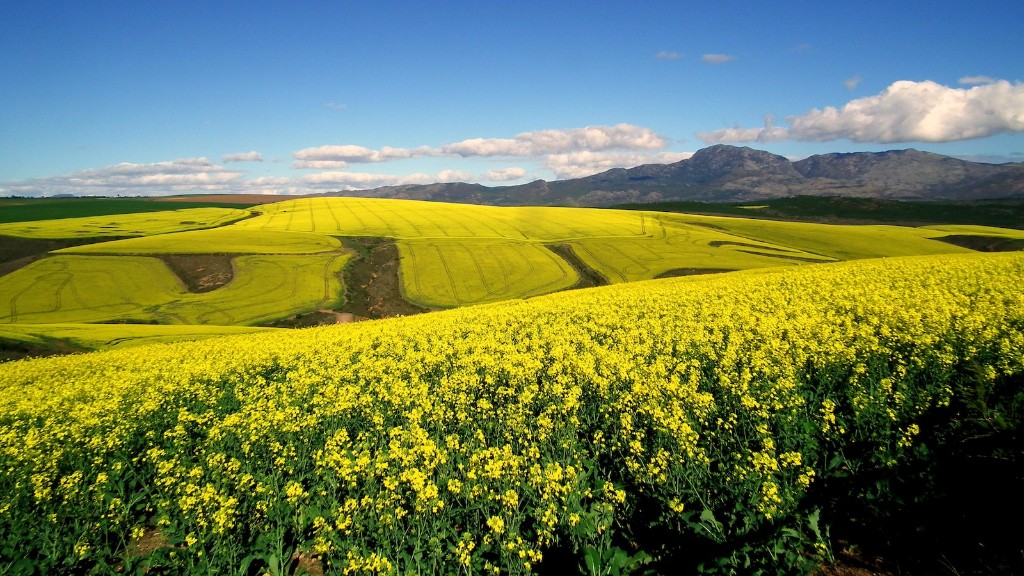Agriculture, in its most basic sense, is the science, art and practice of cultivating soil, producing crops and managing livestock. At the same time, it is also a vital and integral part of everyday life. Labour in agriculture is the term used to describe the human effort that goes into performing agricultural activities, such as planting, harvesting, cultivating and managing crops, animals and land. It is essential and fundamental in agricultural production, as well as in other related processes such as marketing, storage and distribution.
Labour in agriculture can be divided into both manual and mechanised labour. Manual labour involves the use of physical strength and muscle power to perform tasks such as ploughing, sowing, harvesting and tending to animals. This type of labour is often undertaken by farmers and agricultural workers, as well as by labourers in agro-allied industries. On the other hand, mechanised labour involves the use of machines or equipment to perform various activities, including harvesting, ploughing, cultivating and threshing. In addition, labour in agriculture is also used for value chain processes, such as marketing and transport.
The importance of labour in agriculture cannot be overstated. It is at the heart of the successful operation of any agricultural system, since it is the primary source of production labour. In practical terms, it refers to the human contribution of effort and resources needed to carry out agricultural practices. Without labour, nothing in agriculture would be possible. Without adequate labour in agriculture, production would be reduced and techniques would be stagnant, resulting in lower yields and lower profits.
Labour in agriculture is typically carried out in groups. This is because it is more efficient to have more than one person working on a given task. Groups of labourers can perform tasks more quickly and accurately, making labour more efficient and cost-effective. It is also important to note that labour in agriculture is not solely limited to manual labour, as mechanisation is also a key part of it. This includes the use of tractors, combine harvesters and sprayers to aid in crop production.
Labour in agriculture has a direct impact on the economy in a number of ways. It contributes to GDP, as it increases the production of agricultural goods and services. It can also contribute to foreign exchange earnings by selling agricultural goods overseas. Moreover, it can create additional employment opportunities and reduce unemployment levels in rural areas. Thus, labour in agriculture is an essential part of any agricultural system.
Mechanisation of Agricultural Labour
The mechanisation of agricultural labour has been the result of technological advancements in the agricultural sector. It has become increasingly efficient and cost-effective to use machinery and equipment for agricultural purposes, as opposed to relying solely on manual labour. This is particularly beneficial for large-scale agricultural production, as it can reduce labour costs and enable higher yields. Moreover, mechanisation of agricultural labour can also reduce labour-related hazards and injuries, as well as improve the quality of the environment.
As the agricultural sector continues to develop, the use of mechanisation in agricultural production is becoming increasingly common. This is an essential factor in the successful operation of any agricultural system, as it ensures the efficient and effective use of resources. In addition, mechanisation of agricultural labour can also reduce the cost of production and improve the quality of agricultural goods. Furthermore, mechanisation of agricultural labour can improve the working conditions and safety of labourers, as well as reduce the workload, enabling them to focus on more productive tasks.
Mechanisation of agricultural labour can be divided into two types: manual and automated. Manual mechanisation involves the use of manual machines, such as tractors and combines. This type of mechanisation is often used for small-scale farming and requires a lot of strength and skill to operate. On the other hand, automated mechanisation involves the use of computerized machines and robots, which are often used for large-scale farming operations. Automated mechanisation has been shown to be more efficient and cost-effective than manual mechanisation.
The mechanisation of agricultural labour has been an essential factor in the successful operation of any agricultural system, as it has enabled increased efficiency, cost-effectiveness, and safety. It has improved the quality of the environment and reduced labour-related hazards and injuries. Ultimately, mechanisation of agricultural labour has paved the way for a more productive, efficient and sustainable agricultural system, which is beneficial for both farmers and consumers alike.
Role of Technology in Agriculture
The role of technology in agriculture is undeniable, and increasingly, experienced players in the industry are incorporating modern technology in their operations. Technologies such as Artificial Intelligence, Big Data, Internet of Things (IoT), Robotic Process Automation (RPA) are all aiding progress. These technologies have revolutionised the way in which farmers and agricultural businesses can go about their operations.
With the help of artificial intelligence and machine learning technologies, farmers and agricultural businesses are able to access very accurate weather forecasts, which are incredibly beneficial in predicting harvests and protecting crops from varying temperatures and weather conditions. Additionally, AI and machine learning technologies are now used to monitor the health of crops and animals, as well as detect pests, diseases and weeds in the field. By using sensors and imaging, AI and machine learning can provide farmers and agricultural businesses with accurate insights which can then be used to make decisions about land management, crop analytics and maintenance.
Big Data is also transforming the way in which agricultural businesses are operating. Big Data enables farmers and agricultural businesses to collect data from numerous sources and analyse these data with algorithms to extract useful insights. This insights can then be used to make decisions about land use, crop rotation and resource management. For example, Big Data can be used to identify optimal soil conditions, determine which crops are best suited to certain climates and detect potential threats of pests and diseases.
The Internet of Things (IoT) is also being used in agriculture in a wide variety of ways. IoT devices are being used to monitor the health of animals and crops, as well as detect problems in the fields. Additionally, these devices can be used to make the process of collecting data much easier, as well as to automate farm operations. Furthermore, the use of RPA allows for better decision-making and planning, as it can be used to automate tedious and repetitive tasks.
Technology is undeniably playing an increasingly important role in the agricultural sector. With the help of AI, Big Data, IoT and RPA, farmers and businesses are able to operate more efficiently and effectively, leading to improved yields and productivity. By embracing the latest technologies, agricultural businesses will be able to stay competitive and take advantage of the numerous opportunities that they offer.
Impact of Labour in Agriculture on Rural Communities
The impact of labour in agriculture on rural communities is immense. Labour in agriculture is essential for agricultural production, as it is the basis for economic activity for these communities. It provides the opportunity for people in rural areas to work and engage in economic activities. This allows rural communities to generate income and improve their standard of living.
Moreover, labour in agriculture has the potential to contribute to greater economic development and overall prosperity in rural areas. This is done by providing employment opportunities and increasing the supply of agricultural goods and services. This allows rural communities to access markets and earn income. Furthermore, labour in agriculture can create multiplier effects, as increased wage income can be spent on additional goods and services, leading to further economic activity in the area.
Labour in agriculture is also a key factor in smallholder farmers’ success. Smallholder farmers play an integral role in global food systems, as they account for the majority of the world’s agricultural production. However, they are often limited in terms of resources and so, labour in agriculture is essential for them. It is the human effort and resources that enables them to cultivate their land and produce crops. Without it, smallholder farmers would not be able to grow enough food for their families or access markets to generate income.
Labour in agriculture, however, is not always beneficial for rural communities. It can be exploitative and, in some cases, can lead to child labour. To combat this, countries must ensure that agricultural labourers are properly remunerated for their work and that their rights are respected and protected. Additionally, countries should also strive to create an enabling environment for rural labour markets to address both the supply- and demand-side issues that contribute to the informal nature of rural labour markets.
Impact of Technological Advancements on Labour in Agriculture
The advent of technology has had a significant impact on labour in agriculture. Technological advances have enabled more efficient and cost-effective ways of doing agricultural activities, thereby reducing labour intensity. For example, mechanisation has enabled the automation of certain agricultural practices, leading to increased efficiency. This has allowed farmers to operate more effectively and cost-effectively, as well as reduce labour costs.
Furthermore, technological advancements have also enabled the development of precision agriculture and the use of digital tools. These are helping farmers to better understand their soils, crops and environmental factors, enabling them to optimise their operations and better manage their resources. Additionally, digital and technological tools are being used to monitor and analyse large amounts of data, providing agriculturists with invaluable insights.
The use of technology in agriculture has enabled farmers to reduce their reliance on manual labour and increase the efficiency and cost-effectiveness of their operations. While this may have reduced the amount of labour required in some activities, it has also led to new types of labour. Digital experts, data analysts and technicians have become increasingly valuable in agricultural systems, indicating a shift in the type of labour needed in the agricultural sector.
Moreover, technological advancements in agriculture have impacted the living and working conditions of agricultural labourers. With the advent of mechanisation, the intensity of labour has decreased and the number of labourers has been reduced. This has resulted in a shift from manual labour to more skilled and specialist forms of labour. Additionally, the use of technology has improved the safety of labourers, as well as the quality of their working conditions.
In conclusion, technology in agriculture has had a profound effect on labour in agriculture. It has led to increased efficiency and cost-effectiveness in agricultural production, as well as changed the types of labour required in the sector. Additionally, it has led to improved labour conditions and safety for labourers. Ultimately, technological advancements in agriculture are here to stay and will continue to impact labour in agriculture in the foreseeable future.





